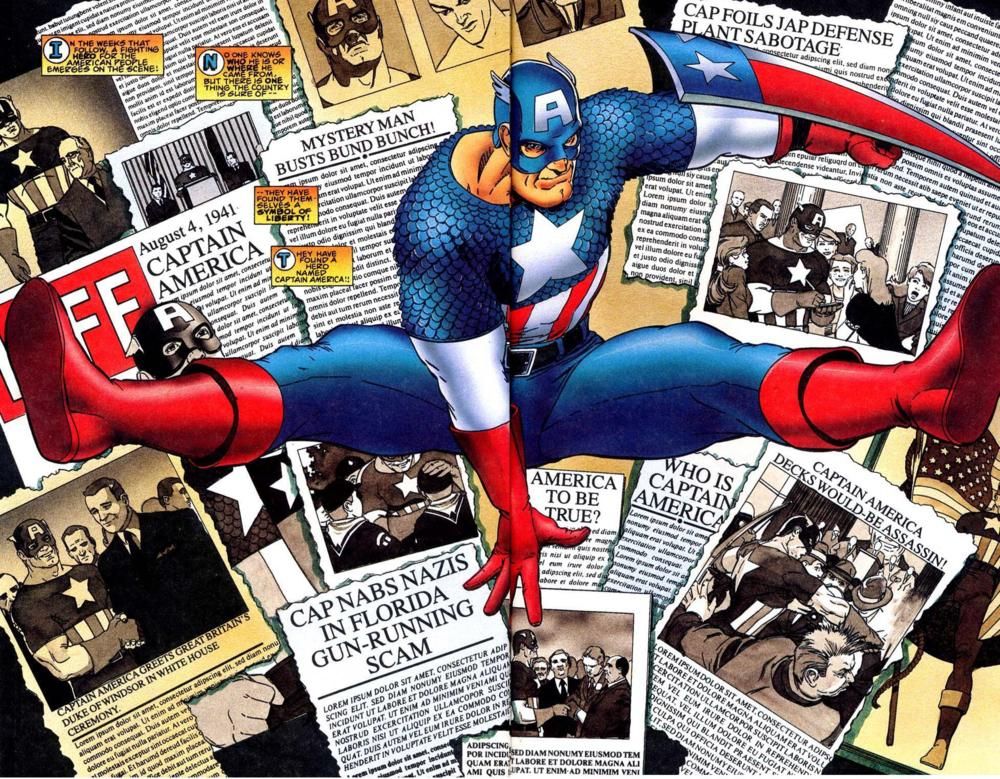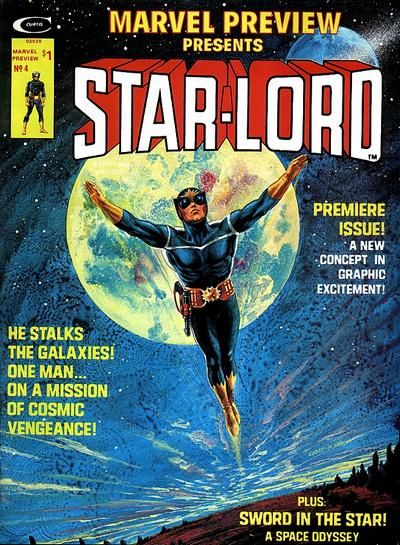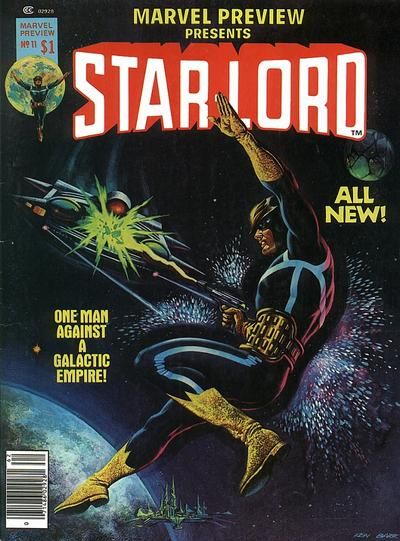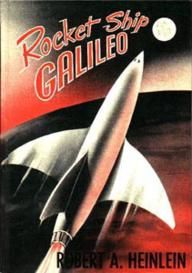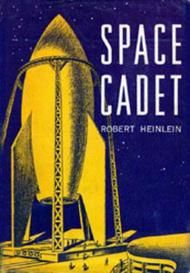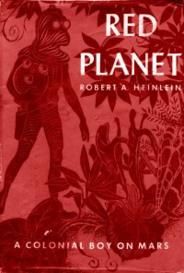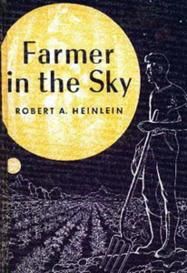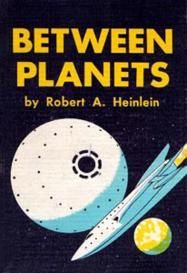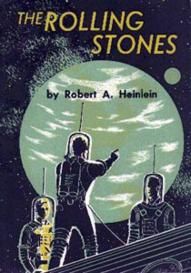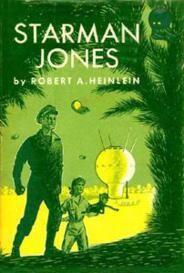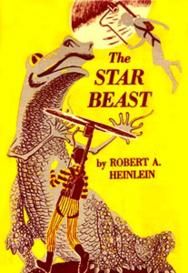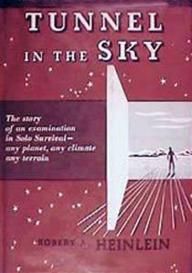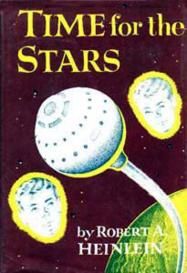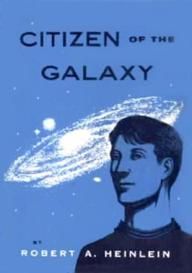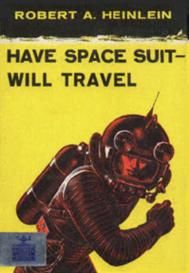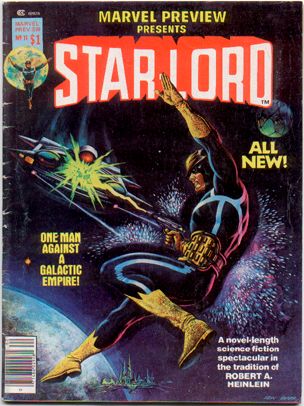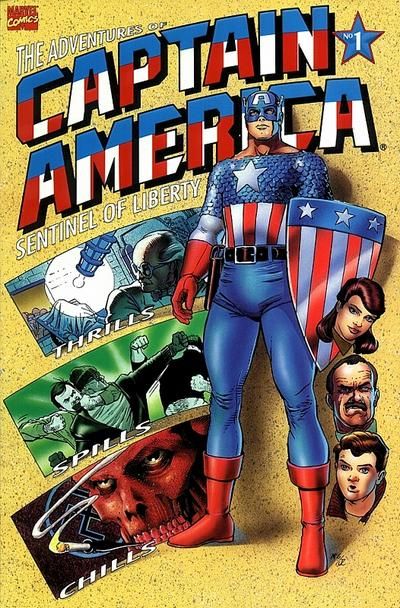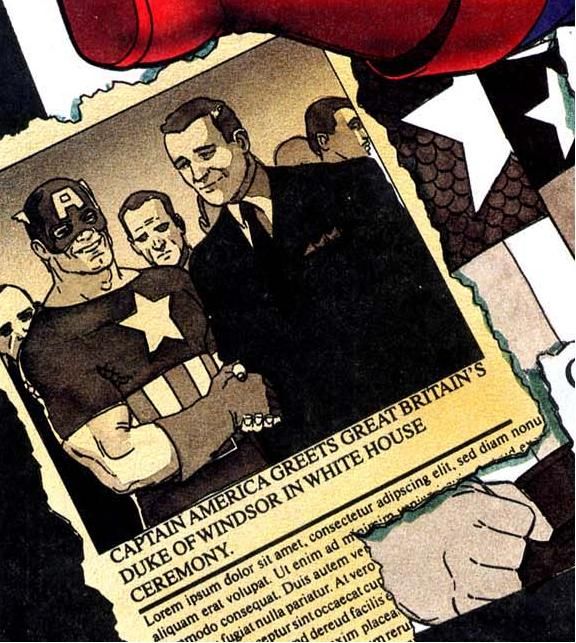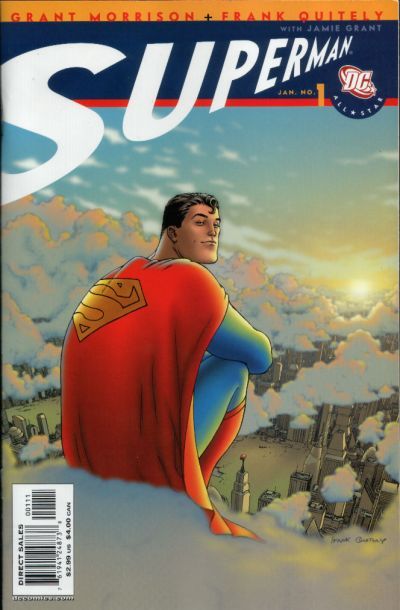This is the one-hundred and ninety-fourth in a series of examinations of comic book legends and whether they are true or false. Click here for an archive of the previous one-hundred and ninety-three.
Let's begin!
COMIC LEGEND: Robert Heinlein threatened to sue Marvel for ripping his stories off for Star-Lord.
STATUS: False, as Presented.
It's interesting to see that just the other week, Greg Hatcher featured Marvel Preview #11 in his countdown of his favorite single issues (as an honorable mention), as around that same time, reader Geoffrey wrote in to ask about Star-Lord!
He wrote:
Is it true that Marvel had to change Steve Englehart's Star-Lord because Robert Heinlein threatened to sue Marvel over the similarities between the character and his novels?
I like these particular legends, as they go to show you how all of these things get sort of jumbled up with various half-truths so that a story that was originally passed around as X eventually gets sent to me years later as X*Y/Z+W-V.
Okay, first off, the Star-Lord at issue is not Englehart's Star-Lord, but Chris Claremont's.
Steve Englehart introduced the character in Marvel Preview #4.
Englehart's idea was (in his own words):
My hero would go from being an unpleasant, introverted jerk to the most cosmic being in the universe, and I would tie it into my then-new interest in astrology. After his earthbound beginning, his mind would be opened step by step, with a fast-action story on Mercury, a love story on Venus, a war story on Mars, and so on out to the edge of the solar system, and then beyond.
Of course, once Englehart established him as an unpleasant, introverted jerk on Earth named Peter Quill, Englehart left Marvel.
So that cosmic evolution never happened.
However, Marvel Preview editor John Warner liked the character, so in came Chris Claremont with Marvel Preview #11, who more or less re-created the character.
This is this version of Star-Lord that most fans of the character remember, with a young John Byrne doing the art for the first issue (with Terry Austin on inks, to boot!) and Carmine Infantino doing the next two parts of the story in Marvel Preview #14 and 15, respectively (Doug Moench eventually took over the character when he went to the "normal" Marvel comic book line, and after a long period of not being used, the character of Peter Quill was revived by Keith Giffen in the pages of the Thanos ongoing and later given a major role in the Annihilation crossover. Today, Quill is the main character in Marvel's Guardians of the Galaxy comic book).
Claremont's take on Star-Lord was to greatly reduce the sort of "mad dog" approach that Englehart had and make the character a great deal more sympathetic. He then turned the stories into, as Greg so nicely termed it, "a rollicking Heinlein-esque space adventure ranging across the galaxy."
The Heinlein part is important.
Claremont clearly was drawing a lot of inspiration from the so-called "Heinlein juveniles," the 12 novels for kids that Robert A. Heinlein wrote from the late 40s until the late 50s. These sci-fi books were also very adventure-driven, with a lot of themes that appealed to young readers of the time, but also appealed to pretty much any sci-fi adventure fan. Heck, there is a lot of Luke Skywalker in the teen heroes of Heinlein's juveniles.
Here are the twelve "Heinlein juveniles"...
So here's where the confusion comes in, and I'm sure where the people who told Geoffrey the story got their info from. While Claremont's stories were Heinlein-esque, they certainly were not close to direct rip-offs.
HOWEVER, on the original cover to Marvel Preview #11, it plainly says: A novel-length science fiction spectacular in the tradition of ROBERT A. HEINLEIN.
And there, Heinlein DID have a problem.
It's one thing to use a guy's books as the inspiration for your story, it's a whole other thing to use a guy's books as the inspiration for your story and then put his name in bold letters on the front of your magazine to help sell the inspired stories on the strength of Heinlein's name.
So Heinlein's lawyers contacted Marvel and a new printing was done and the text was removed.
In fact, relatively few copies of Marvel Preview #11 exist with the original text.
It took me quite awhile to find a scan of the original cover. I eventually came across it on John Byrne's forum, where helpful forum member Jason Czeskleba posted a scan of his personal copy of the issue. Here it is...
So there you go, a fun look at telephone, Comic Book Legend style!
Thanks to Geoffrey for the question, Steve Englehart for having such a cool website (www.steveenglehart.com) filled with helpful info, Greg Hatcher for writing about Marvel Preview in the first place (and having that awesome line about Heinlein right in the piece! How serendipitous was THAT?) and Jason Czeskleba for the scan of the original cover of Marvel Preview #11.
COMIC LEGEND: A misunderstanding of an artist's note made for an amusing mis-identification in an issue of Captain America.
STATUS: True
In 1991, Marvel released an expanded take on the origin of Captain America called The Adventures of Captain America: Sentinel of Liberty.
It was scripted by Fabian Nicieza and drawn (for the first two and a half issues) by Kevin Maguire, with Kevin West stepping in to finish the four-book series.
While Maguire did not draw the entire series, he did plot it all out with Nicieza.
In issue #2, Captain America has just become a national figure, and there is a neat two-page spread where we see the various headlines from Cap's burgeoning career.
While working on the scene, Maguire left a note for Nicieza. He explained that one of the headlines was going to be Captain America meeting John Wayne. So Maguire wrote something along the lines of "Cap Meets the Duke."
And that's what Maguire drew.
When the issue came out, though, it was evident how Nicieza (and the book's editor, as well) took the note....
The Duke of Windsor never looked so cool.
Thanks to the great interview George Khoury conducted with Kevin Maguire for TwoMorrows' awesome Modern Masters series. You can buy the Kevin Maguire volume here. You can follow George's column on Comic Book Resources, Pop!, here. Thanks, George!
For a bonus, here's the full page spread (click to enlarge) from The Adventures of Captain America: Sentinel of Liberty #2...
COMIC LEGEND: Grant Morrison, Mark Millar, Mark Waid, and Tom Peyer had a failed proposal for Superman
STATUS: True
I've always held off on featuring this one because I thought it was a bit too "known," but if I've learned anything over the years is that I really shouldn't be making any judgments about what is or what is not "too known," as my idea of what is "too known" rarely (if ever) matches the general readership's idea on the subject.
So when reader Juno asks:
Here’s an idea for an Urban Legend. I heard that Grant Morrison, Mark Millar, Mark Waid, and Tom Peyer had a failed proposal for Superman to radically overhaul the character into a more proactive, politically influential, populist hero sort of thing. Is that true?
I really should just answer the darn thing!
So yes, Juno, in late 1998, Grant Morrison, Mark Millar, Mark Waid and Tom Peyer developed an extensive proposal for the Superman titles that was scheduled to launch in January of 2000.
The proposal was originally greenlit, but then DC changed their mind and instead decided to go for a much softer revamp of the four Superman titles.
They still basically revamped all four Superman titles, they just did not go as far and as wide as the Morrison/Millar/Waid/Peyer revamp wanted to go.
Here's a snippet from their introduction:
Historical record tells us that every fifteen years or so, Superman is re-imagined to address the wants and needs of a new generation. Fifteen years ago, John Byrne recreated Superman from the ground up. Fifteen years prior to that, Julie Schwartz and Denny O'Neil engineered the biggest shakeup since Mort Weisinger began bringing in all his familiar lore fifteen years previous.
That fifteen year cycle is upon us again. With all due deference and heartfelt thanks to the creators of all the fine work done since the Byrne revamp, it seems that many of the social trends and historical currents which made those comics so appropriate and so successful in the '80s and early '90s have now been replaced by newer, different trends and currents. Sadly, sales would seem to reflect our contention that new times demand fresh approaches.
We believe that the four of us understand the new face of Superman: a forward-looking, intelligent, enthusiastic hero retooled to address the challenges of the next thousand years. The ultimate American icon revitalized for the new millennium as an aspirational figure, a role model for 21st Century global humanity.
The Superman relaunch we're selling bucks the trend of sweeping aside the work done by those who came immediately before. Unlike the 'cosmic reset' revamps all too prevalent in current comics, our New Superman approach is an honest attempt to synthesize the best of all previous eras. Our intention is to honor each of Superman's various interpretations and to use internal story logic as our launching pad for a re-imagined, streamlined 21st century Man of Steel. The 'cosmic reset' notion has been replaced by a policy of 'include and transcend' with regard to past continuity.
Our intention is to restore Superman to his pre-eminent place as the greatest super-hero of all and to topple Spawn and every Marvel comic that's currently in his way.
We don't think this will be much of a problem.
Superman: Through The Ages has the full text of the proposal up at their website here.
Tim Callahan and Chad Nevett thoroughly examined the proposal on their respective blogs. Click here for the archived discussions.
A great deal of Grant Morrison's acclaimed All Star Superman run came from the 1998 proposal, so it's interesting to note that we have basically seen more or less tangible evidence that the revamp WOULD have been successful had it been tried.
Alas and alack.
Thanks to Superman Through the Ages (it is a great site, check it out) for the proposal and thanks to Juno for the question!
Okay, that's it for this week!
Thanks to the Grand Comic Book Database for this week's covers!
Feel free (heck, I implore you!) to write in with your suggestions for future installments! My e-mail address is cronb01@aol.com.
See you next week!

